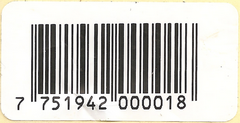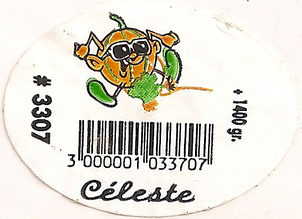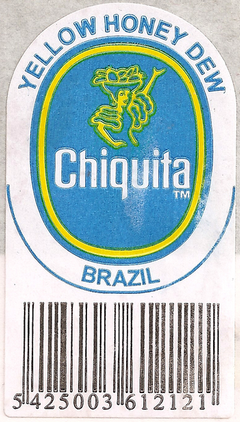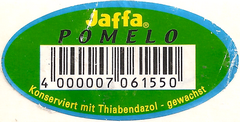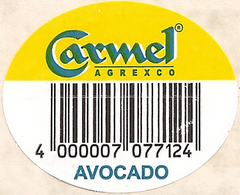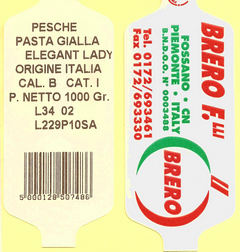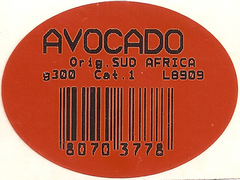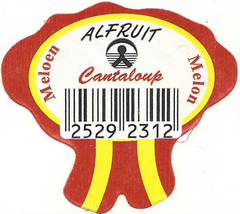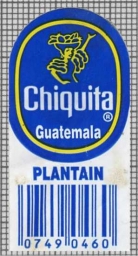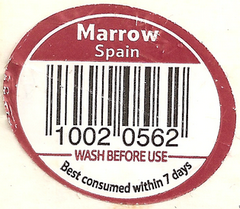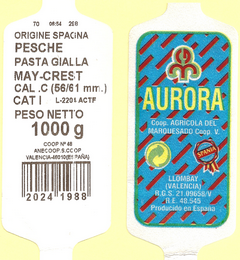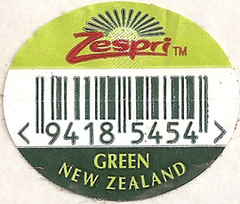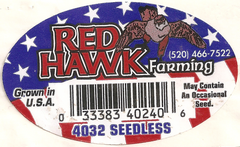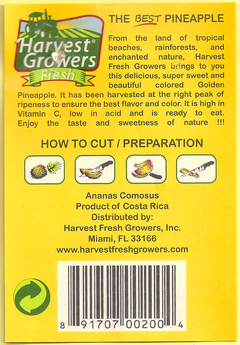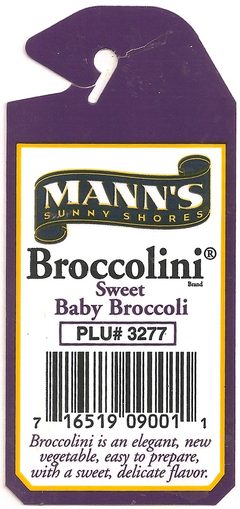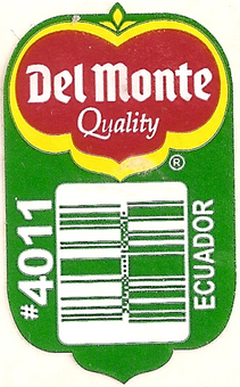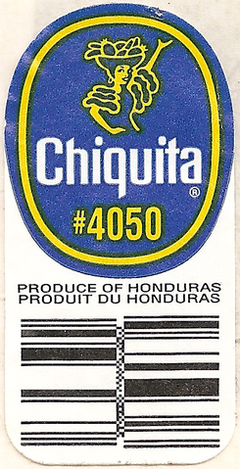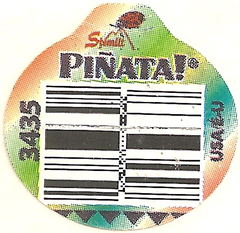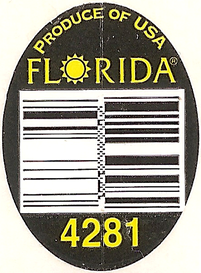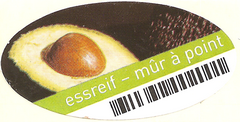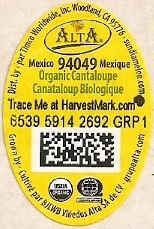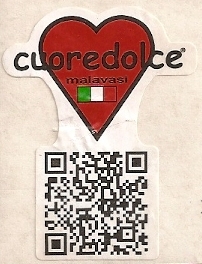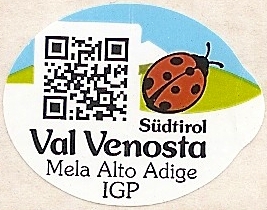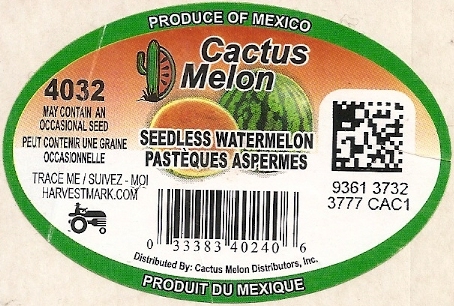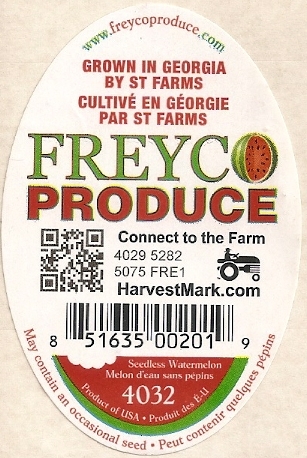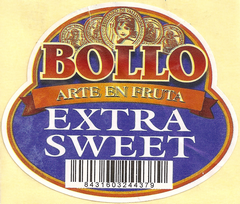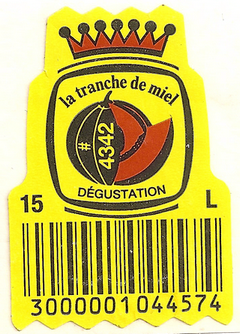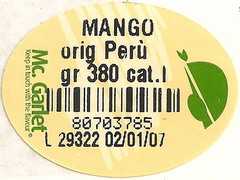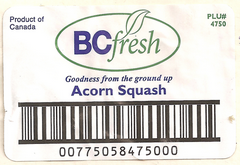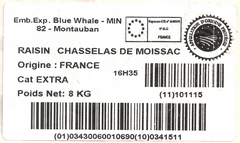Documents
Current code
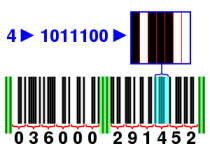 The UPC encodes 12 decimal digits as SLLLLLLMRRRRRRE, where S (start) and E (end) are the bit
pattern 101, M (middle) is the bit pattern 01010 (called guard bars), and each L (left) and R (right) are digits, each one represented by a
seven-bit code. This is a total of 95 bits. The bit pattern for each numeral is designed to be as
little like the others as possible, and to have no more than four consecutive 1s or 0s in order. Both are for reliability in scanning.
The UPC encodes 12 decimal digits as SLLLLLLMRRRRRRE, where S (start) and E (end) are the bit
pattern 101, M (middle) is the bit pattern 01010 (called guard bars), and each L (left) and R (right) are digits, each one represented by a
seven-bit code. This is a total of 95 bits. The bit pattern for each numeral is designed to be as
little like the others as possible, and to have no more than four consecutive 1s or 0s in order. Both are for reliability in scanning.Since S, M, and E all include two bars, and each of the 12 digits of the UPC-A barcode consists of two bars and two spaces, all UPC-A barcodes consist of exactly (3×2)+(12×2)=30 bars.
The UPC has only numerals, with no letters or other characters. The first digit L is the prefix. The last digit R is an error correcting check digit, allowing some errors in scanning or manual entry to be detected. UPC data structures are a component of GTINs (Global Trade Item Numbers). All of these data structures follow the global GS1 standards.
Global Trade Item Number (GTIN) is an identifier for trade items developed by GS1 (comprising the former EAN International and Uniform Code Council). Such identifiers are used to look up product information in a database (often by inputting the number through a bar code scanner pointed at an actual product) which may belong to a retailer, manufacturer, collector, researcher, or other entity. The uniqueness and universality of the identifier is useful in establishing which product in one database corresponds to which product in another database, especially across organizational boundaries.
GS1, founded in 1977, is an international not-for-profit association dedicated to the development and implementation of global standards and solutions to improve the efficiency and visibility of supply and demand chains globally and across multiple sectors. The GS1 System of standards is the most widely-used supply-chain standards system in the world.
GS1's main activity is the development of the GS1 System, a series of standards designed to improve supply-chain management.
The GS1 System is composed of four key standards: Barcodes (used to automatically identify things), eCom (electronic business messaging standards allowing automatic electronic transmission of data), GDSN (Global Data Synchronisation standards which allow business partners to have consistent item data in their systems at the same time) and EPCglobal (which uses RFID technology to immediately track an item).
The main barcode types found on fruitstickers or on other labels that are found on fruit are: EAN-13, EAN-8, UPC-A, UPC-E and GS1 DataBar Stacked.
EAN-13
 An EAN-13 barcode (originally "European Article Number",
but now renamed ”International Article Number” even though the abbreviation has been retained) is a 13 digit (12 + check digit)
barcoding standard which is a superset of the original 12-digit
Universal Product Code (UPC) system developed in the United
States. The EAN-13 barcode is defined by the standards organisation
GS1.
An EAN-13 barcode (originally "European Article Number",
but now renamed ”International Article Number” even though the abbreviation has been retained) is a 13 digit (12 + check digit)
barcoding standard which is a superset of the original 12-digit
Universal Product Code (UPC) system developed in the United
States. The EAN-13 barcode is defined by the standards organisation
GS1.The EAN-13 barcodes are used worldwide for marking products often sold at retail point of sale. The numbers encoded in EAN-13 bar codes are product identification numbers, which are also called Japanese Article Number (JAN) in Japan. All the numbers encoded in UPC and EAN barcodes are known as Global Trade Item Numbers (GTIN), and they can be encoded in other GS1 barcodes.
EAN-13 is used world-wide for marking retail goods. The symbol encodes 13 characters: the first two or three are a country
code which identify the country in which the manufacturer is registered (not necessarily where the product is actually made). The country code is followed by 9 or 10 data digits (depending on the length of the country code) and a single digit check-sum. 2-digit and 5-digit supplemental barcodes may be added for a total of 14 or 17 data digits.
EAN-13 is very common on Melons stickers, mainly for European market while in USA market UPCA is preferred
EAN-8
 The less commonly used EAN-8 barcodes are used also for marking retail goods; however, they are usually reserved for smaller items, for example confectionery.
The less commonly used EAN-8 barcodes are used also for marking retail goods; however, they are usually reserved for smaller items, for example confectionery.EAN-8 is a shortened version of the EAN-13 code. It includes a 2 or 3 digit
country code, 4 of 5 data digits (depending on the length of the country code), and a checksum digit. While it is possible to add a 2-digit or 5-digit extension barcode, the primary purpose of the EAN-8 code is to use as little space as possible.
Unlike the UPC-E symbol, which compresses data that could also be printed as a full-size
UPC-A symbol by squeezing out zeroes, the data digits in an EAN-8 symbol specifically identify a particular product and manufacturer. Since a limited number of EAN-8 codes are available in each country, they are issued only for products with insufficient space for a normal EAN-13 symbol. For example, a 2-digit country code permits a total of only 100,000 item numbers.
EAN-8 is largely used on Flag labels for little fruit packets.
UPC-A
 UPC-A is used for marking products which are sold at retail in the USA. The barcode identifies the manufacturer and specific product so point-of-sale cash register systems can automatically look up the price. The UPC-A Code and the assignment of manufacturer ID numbers is controlled in the U.S.A. by the Uniform
Code Council located in Dayton, Ohio.
UPC-A is used for marking products which are sold at retail in the USA. The barcode identifies the manufacturer and specific product so point-of-sale cash register systems can automatically look up the price. The UPC-A Code and the assignment of manufacturer ID numbers is controlled in the U.S.A. by the Uniform
Code Council located in Dayton, Ohio. Common in USA market especially on Melons and Watermelons.
UPC-E
 UPC-E is a variation of the UPC-A symbol that is used for number system 0. By suppressing zeroes, UPC-E codes can be printed in a very small space and are used for labeling small items.
UPC-E is a variation of the UPC-A symbol that is used for number system 0. By suppressing zeroes, UPC-E codes can be printed in a very small space and are used for labeling small items.The UPC-E code is a compressed barcode which is intended for use on small items. Compression works by squeezing extra zeroes out of the barcode and then automatically re-inserting them at the scanner. Only barcodes containing zeroes are candidates for the UPC-E symbol.
GS1

GS1 DataBar Stacked Omnidirectional
GS1 renamed the RSS Symbology (Reduced Space Symbology) to GS1 DataBar to avoid confusion with popular RSS XML Feed technology. The new name does not change the standard, however, and any documentation that refers to RSS Symbology is the same as GS1 DataBar.
GS1 DataBar Stacked Omnidirectional is designed to condense the GTIN information into a more compact and square barcode suitable for use on smaller packages (such as the label stickers on fresh produce).
GS1 DataBar Family (from Morovia)
| Variant | Data Encoded | POS | Applications | Sample Barcode |
|---|---|---|---|---|
| DataBar Omnidirectional | 14-digit GTIN | Yes | Packaged goods |

|
| DataBar Stacked Omnidirectional | 14-digit GTIN | Yes | Packaged goods, Produce |

|
| DataBar Expanded | Any GS1-128 data, up to 74 digits or 41 alphanumeric | Yes | Variable-measure food, Coupons |

|
| DataBar Expanded Stacked | Any GS1-128 data, up to 74 digits or 41 alphanumeric | Yes | Variable-measure food, Coupons |

|
| DataBar Truncated | 14-digit GTIN | No | Health care item |

|
| DataBar Stacked | 14-digit GTIN | No | Health care item |

|
| DataBar Limited | 14-digit GTIN | No | Health care item |

|
Bidimensional code
The previous ones are linear barcodes, there are also two-dimensional with a lot of type but in our case (the fruit and vegetable labels) you find only QR code. In recent years there was a proliferation in some labels but also in many other cases (advertising, event posters, etc.) of QR code (Quick Response),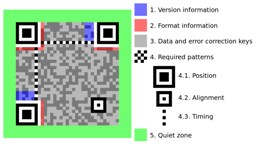 this is an array of black squares on a white background.
this is an array of black squares on a white background.The QR code was developed in 1994 by the Japanese company Denso Wave, for the purpose of tracking the car parts in Toyota factories.
 In regard of code's ability to contain more data than a barcode was later used for the management of stocks by different industries.
In regard of code's ability to contain more data than a barcode was later used for the management of stocks by different industries.As you can see in the attached figure the QR code is a matrix with 3 large squares (at three corners) and a smaller one (which give alignment), around the 3 larger squares are placed information about version and format, the rest of the field contains informations and keys to error correction. Around the square there is a white band that serves to delimit the area to be scanned by the app that reads the code.
A Data Matrix code is a two-dimensional matrix barcode consisting of black and white "cells" or modules arranged in either a square or rectangular pattern. Data Matrix was invented by International Data Matrix, Inc. (ID Matrix) which was merged into RVSI/Acuity CiMatrix, who were acquired by Siemens AG in October, 2005 and Microscan Systems in September 2008. Data Matrix is covered today by several ISO/IEC standards and is in the public domain for many applications, which means it can be used free of any licensing or royalties. Data Matrix symbols are made up of modules arranged within a perimeter finder and timing pattern.

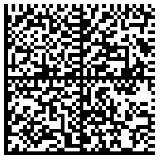 It can encode up to 3,116 characters from the entire ASCII character set (with extensions). The symbol consists of data regions which contain modules set out in a regular array. Large symbols contain several regions. Each data region is delimited by a finder pattern, and this is surrounded on all four sides by a quiet zone border (margin).
The code can be read easily from a mobile phone or a smartphone through an ad hoc app. Theoretically it is possible to register into one cryptogram up to 7,089 numeric characters or 4,296 alphanumeric or 2953 bytes; in practice, in most cases, they are used to store the internet address of the product or event to which they relate.
It can encode up to 3,116 characters from the entire ASCII character set (with extensions). The symbol consists of data regions which contain modules set out in a regular array. Large symbols contain several regions. Each data region is delimited by a finder pattern, and this is surrounded on all four sides by a quiet zone border (margin).
The code can be read easily from a mobile phone or a smartphone through an ad hoc app. Theoretically it is possible to register into one cryptogram up to 7,089 numeric characters or 4,296 alphanumeric or 2953 bytes; in practice, in most cases, they are used to store the internet address of the product or event to which they relate.
Some links to barcode theme
Barcode on WikipediaDifferent Types of Barcodes
Agamik Barcoding
IDAutomation Barcode FAQ & Tutorial
GS1 DataBar Barcode FAQ and Tutorial
Supported Barcode Types
IDAutomation: How to Identify a Barcode, pictures for 33 types
Barcodes, readers, scanners, fonts, software
Barcode Types
Barcode fonts
Barcode: picture and informations on 40 types
GS1
Search from barcode to enterprise informatioons
QR code on Wikipedia
Datamatrix code on Wikipedia
Create your own QR code
Create your own Data Matrix code
Barcodes for fun
Onlineweblibrary BLOGPictures of barcode vector
Perché il codice a barre?
Kyoko
Architettura e design
Bar-code-revolution
Freedom
Upstate fancy
QRcodes




